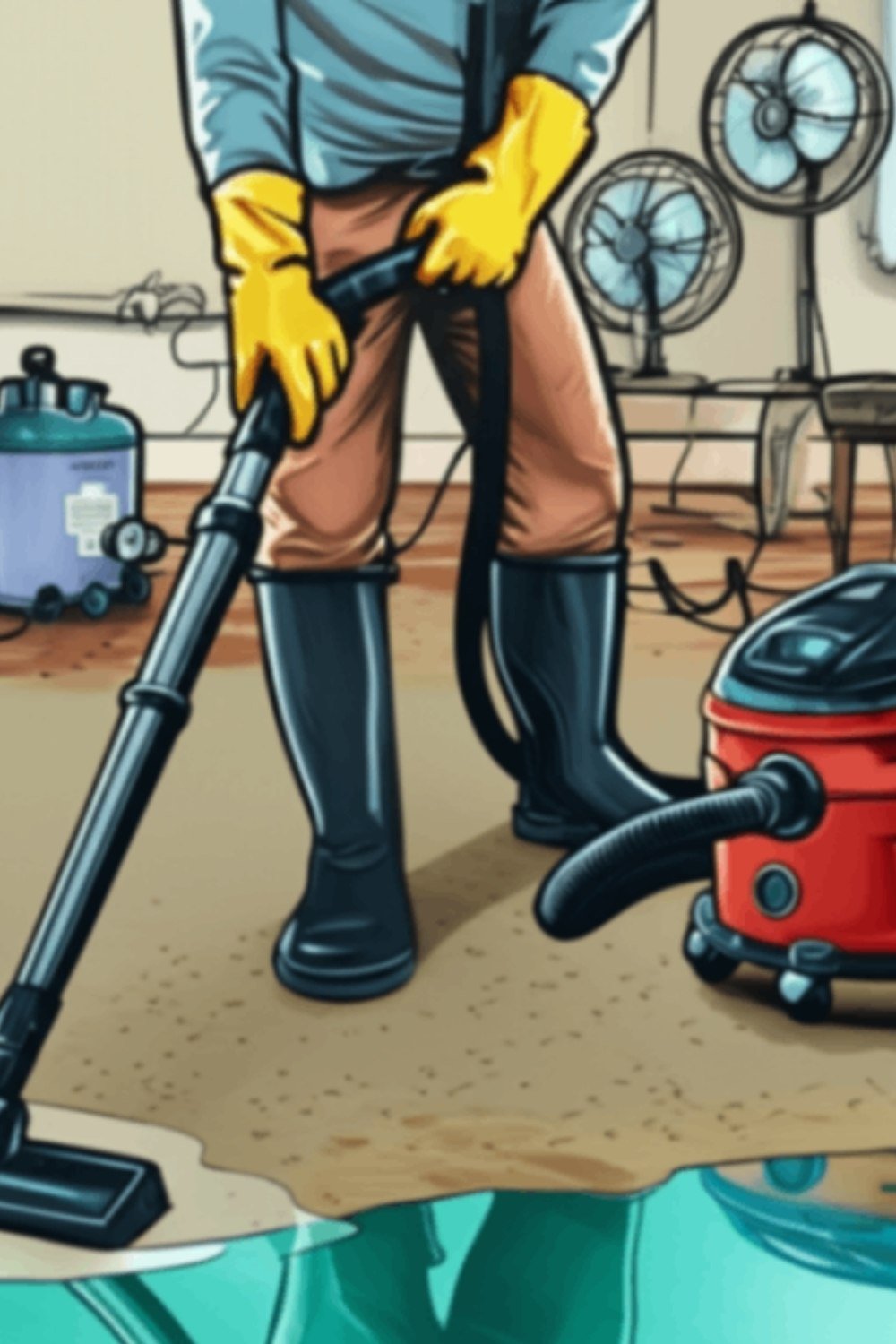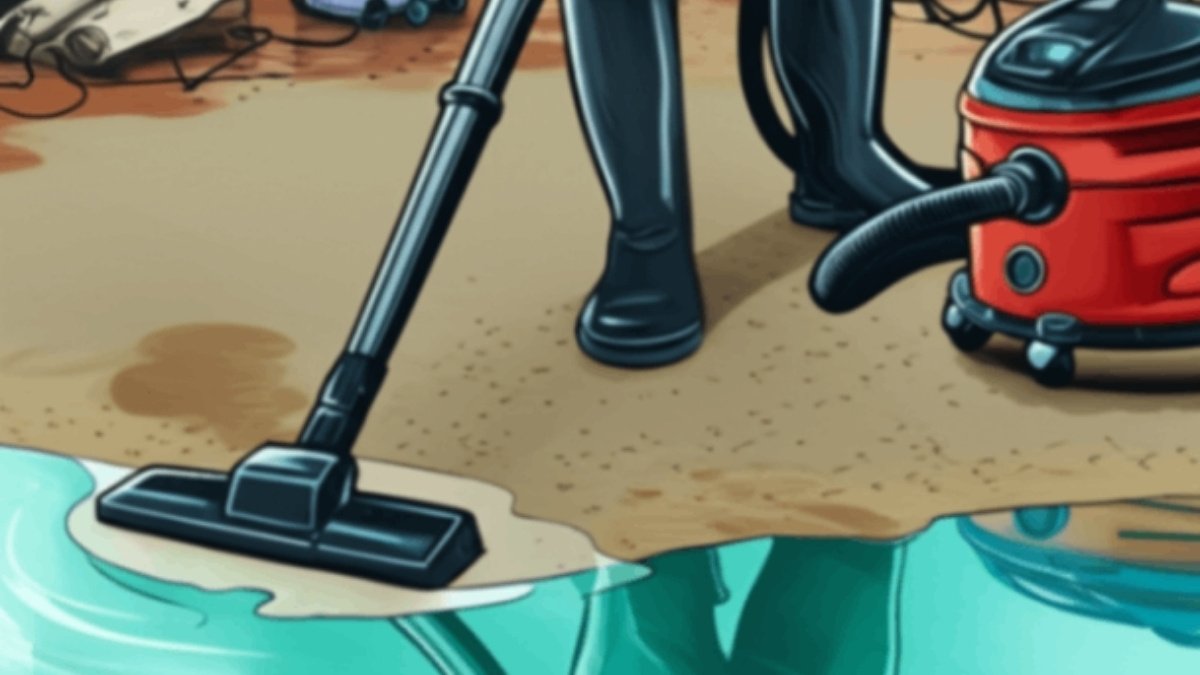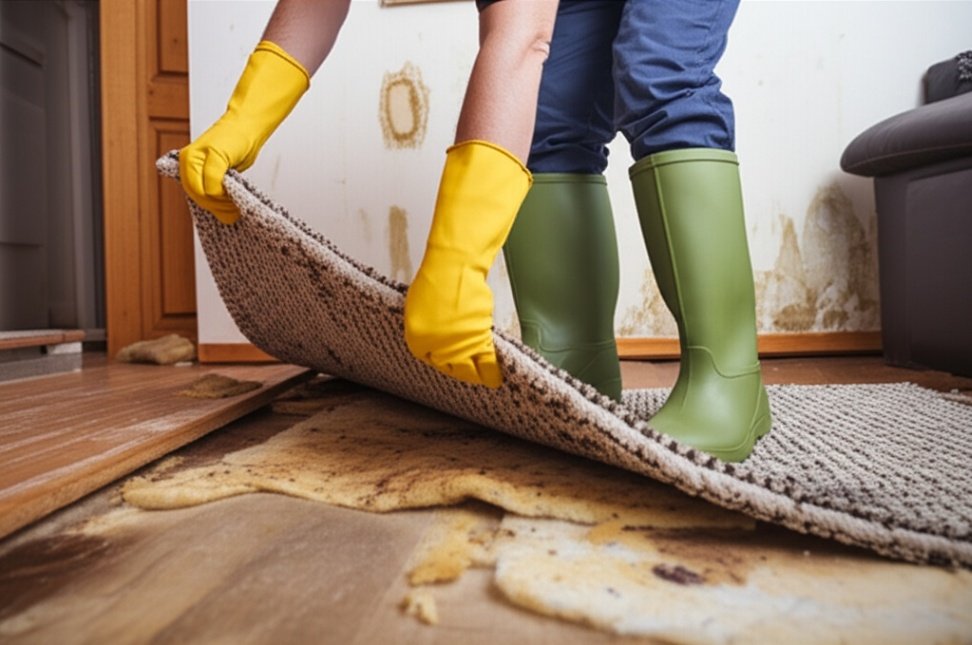Dealing with a flood in your home is overwhelming, to say the least. Once the water recedes, you’re left with the daunting task of cleanup. It’s hard to know where to even begin. If your carpets are soaked, your first instinct might be to despair, but don’t lose hope just yet. Acting quickly and correctly can sometimes save them.
We’re here to walk you through it, one step at a time. This guide is all about tackling that waterlogged carpet—how to assess the damage, clean it safely, and, most importantly, prevent the bigger problem of mold. Let’s get your cozy haven on the road to recovery.

You might also like:
- How to Redecorate Your Home with things You Already Have
- How to Remove New Carpet Odor: Simple and Effective Ways
- How to Clean a Leather Couch: Effective Tips
Step 1: Safety First, Always
Before you even think about the carpet, you need to think about your safety. Floodwater can be more dangerous than it looks.
- Turn Off the Power: If you can safely access your breaker box, shut off the electricity to the flooded area to avoid any risk of electric shock. If the box is in a wet area, call an electrician. Don’t take chances.
- Gear Up: Protect yourself. Wear waterproof boots, rubber gloves, and an N95 mask. Floodwater can contain everything from sewage to chemicals, and you don’t want that touching your skin or getting into your lungs.
- Know Your Water: Professionals classify floodwater into three types. “Clean water” from a burst pipe is the most salvageable. “Gray water” from an overflowing washing machine is a bit iffy. “Black water,” which contains sewage or has come from outside, is a serious health hazard. If you suspect you’re dealing with black water, stop right there. Your carpet is not salvageable, and you need to call a professional restoration service immediately.
Step 2: Get the Water Out—Fast!
Time is your biggest enemy here. The faster you can remove the bulk of the water, the better your chances. Grab a wet/dry vacuum (you can often rent one from a local hardware store) and start sucking up as much standing water from the carpet as you can. Work slowly and go over each area multiple times. The goal is to get it from “flooded” to just “damp.”
Step 3: Assess the Damage and Face the Facts
Now for the moment of truth. Carefully pull up a corner of the carpet. What’s going on underneath?
Check the Padding: Here’s the hard truth—the carpet padding is almost never salvageable. It acts like a giant sponge, and it’s nearly impossible to disinfect and dry out completely. Plan on ripping it out and throwing it away. It’s a small price to pay to avoid a massive mold colony under your feet.
Consider the Time: The 24–48 hour rule is key. If the carpet has been soaked for more than two days, mold has likely already started to grow, even if you can’t see it yet. In this case, replacement is your safest and healthiest option.
Step 4: The Big Clean
If you’ve determined the carpet itself is worth saving (it was clean water and you got to it quickly), it’s time for a deep clean. This isn’t a job for a simple spot treatment.
- Remove and Relocate: After getting rid of the padding, take the carpet itself outside if you can. A clean driveway or patio on a dry, sunny day is perfect.
- Wash and Rinse: Hose down the carpet to remove any dirt or silt. Then, it’s time to scrub. You’ll want to use a carpet cleaner or steam cleaner with a strong, disinfecting cleaning solution designed for carpets. Follow the product’s instructions carefully.
- Clean the Subfloor: Don’t forget the floor underneath! While the carpet is out, thoroughly clean and disinfect the subfloor. Mop it with a disinfectant cleaner and let it dry completely. This step is non-negotiable.
Step 5: Dry, Dry, and Dry Again

This is the most critical phase. Getting your carpet and subfloor 100% dry is the only way to guarantee you won’t have mold problems down the road.
Create a wind tunnel of sorts. Set up as many fans as you can, pointing them directly at the subfloor and the carpet (if you’re drying it indoors). A dehumidifier is your best friend here—it will pull moisture out of the air, speeding up the process significantly. Open windows if the air outside is less humid than inside.
To dry the carpet itself, elevate it on something like sawhorses or concrete blocks to allow air to circulate on all sides. This will take several days. Don’t rush it. “Mostly dry” is not good enough—it needs to be bone dry before you even think about putting it back in place.
Step 6: Know When to Call in the Pros
DIY is great, but some jobs are just too big or too risky. It’s time to call a professional water damage restoration company if:
- The water was contaminated (black water).
- The carpet was wet for more than 48 hours.
- The flooded area is huge (an entire floor or basement).
- You already see or smell signs of mold or mildew.
- You simply feel overwhelmed or don’t have the right equipment. There’s no shame in that! Professionals have industrial-grade equipment that can get the job done faster and more effectively.
Reclaiming Your Space
Recovering from a flood is a marathon, not a sprint. Tackling your carpets is a huge step toward making your house feel like a home again. Remember the key principles: work safely, act fast, be realistic about what you can save, and dry everything thoroughly.
Your home is your sanctuary, and even after a major setback, you have the power to restore its comfort and peace. Take it one step at a time, and don’t be afraid to ask for help when you need it. You’ve got this.







